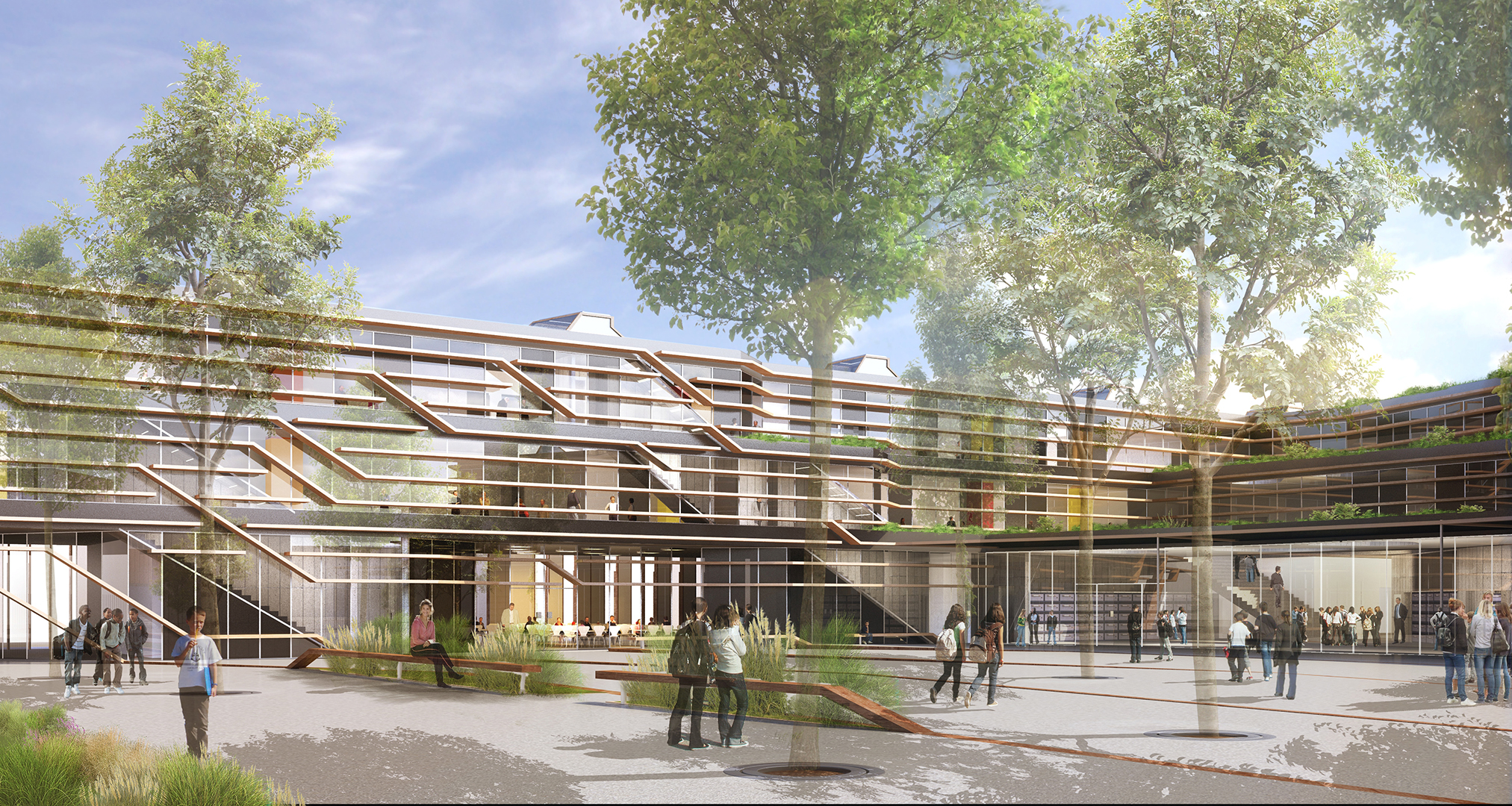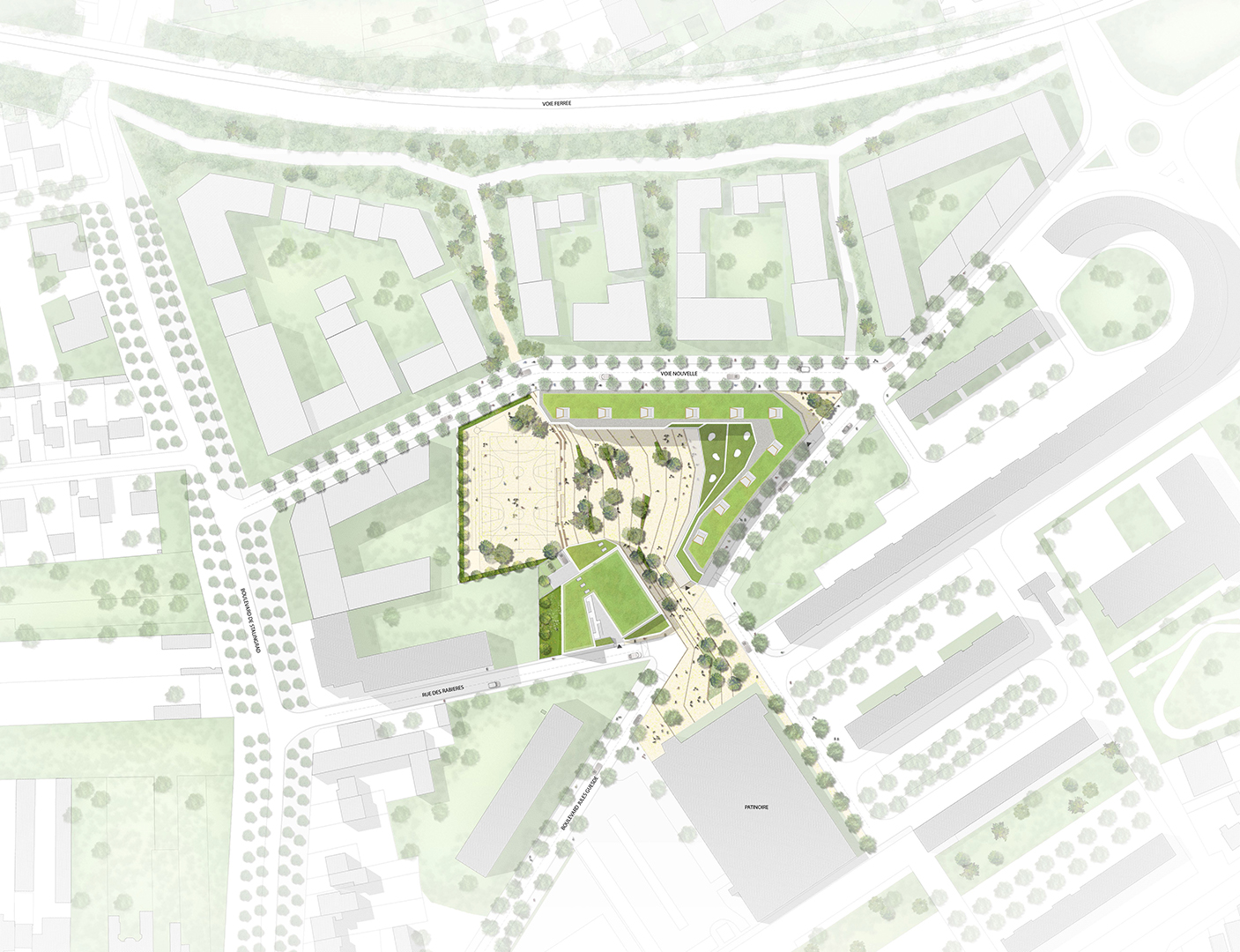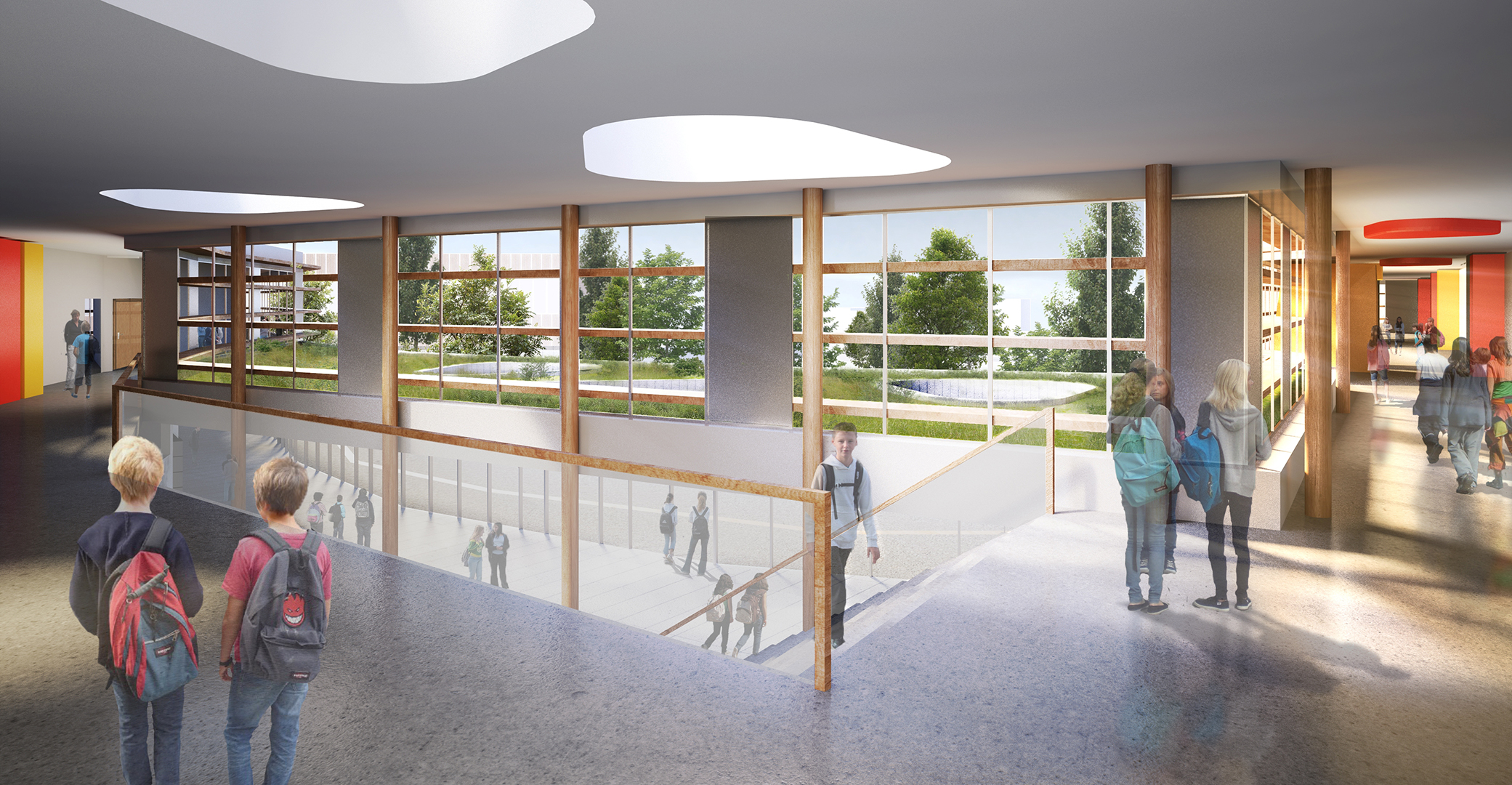
urban orientations
The unique identity of the site invites us straight away to question its place and role in the urban constitution of the city. Let us retain its first quality, that of a green lung inscribed in the continuity of the abundantly vegetated railroad bundle and let us then think of this equipment, in terms of public, landscaped and sustainable continuity. Green entity to be qualified, continuity between district to be created, public space to be reinforced, topography to be revealed … were all latent orientations that the project reveals.
Visual openings and an alley of trees cross the college and make that continuity between the districts substantial. Although closed, the junior high participates in these transversal axis which mark the urban renewal initiated. Focused on this green alley, the high school entrance determines, by the tensioning of three buildings (courtroom, gymnasium and existing ice rink) a new centrality. A real public square is born, where schoolchildren and inhabitants meet, where pedestrian and automobile traffic coexist.

political and social
choices
A terraced construction also extrapolates the site’s unevenness to compose real tiers from north to south and create an interior courtyard, the heart of the project, as dynamic as it is intimate.
The built volumes can be seen as a balcony on a planted landscape, on this topography revealed and crossed below by a planted alley, a fundamental pivot between the high schhol and the city but also between the courtyard and the sports facilities.
We suggest that during school vacation periods, the green alley be open. This innovative proposal testifies to the taking into account, in the original design, of the political and social choices of space sharing.
Mirroring the hifg school, the gymnasium opens onto the forecourt to take its place as equipment shared with the city, accessible by all.
wood structure
and depth
The teaching building is designed with a wooden structure and concrete slabs so as to guarantee climatic inertia combined with the use of a material that has little impact on the environment. The use of wood is privileged from the constitution of the walls to the facades where a set of solar shading contributes to the ecological dimension of the building.
On the street, a strong architectural identity, made up of vertical rhythms that develop like a musical range … Far from an architectural effect, we offer a building whose aesthetic qualities are the result of ethical convictions. Behind the sunshades, we can guess the structure of the building. The play of wooden slats, shades of golden ocher and transparencies, give real depth to the building.

active facade
On the courtyard, to the south, by a new play of pleats, the solar protections give a dynamic to the whole, and mirror the topography of the ground. Bordering the vertical and horizontal circulations, qualifying the courtyard and the school cafeteria, this facade is fundamentally active. Transparencies and obliques distinguish this internal face of the school.
The hall is a generous relaxing area that guides high school students and links the various support rooms to each other. Access to the cafeteria is at the end of this internal extension of the courtyard, on the scale of the large flows of schoolchildren who use this space. A monumental staircase invites to access the level of R + 1 where the Documentation center is immediately visible from the large landing open to the landscape.
Classrooms emerge on both sides of this building backbone. On the upper level, the music and plastic arts rooms occupy the central position and the administration is developed over the entire wing of the building.
natural ventilation
We offer a natural ventilation solution for the vast majority of school spaces with solar chimneys that stand out as an extension of topographic lines.
The sustainable approach is global. Our views on green continuities, public spaces, the quality of uses, are extended by the ambition to design a building with ecological virtues, where the notions of performance and low carbon impact are essential: choice of bioclimatic location, passive systems, building materials and environmental friendly implementation processes.

PROJECT TEAM
MANAGEMENT TEAM
Architect: ANMA
Engineering: Alto
Structure: Batiserf
Economy: Voxoa
Acoustic: Peutz & Associés
COMPETITION
Hélène Galifer
Elsa Briot
Félix Yulzari
Jehanne Bouda
Vivien Corre
TECHNICAL SHEET
STATUS Competition and practicalities
COMMISSIONED BY
Conseil Général du Val-de-Marne
YEAR 2012
SURFACE 6 800 m² SHON
COST 12,5 M€ HT
VIZUALIZATION Noé Simonet
MODEL Michel Goudin
SEE MORE
Casablanca, Lyautey Highschool
Lorient, ENSI Bretagne Sud
Villeurbanne, Pierre Brossolette Highschool
